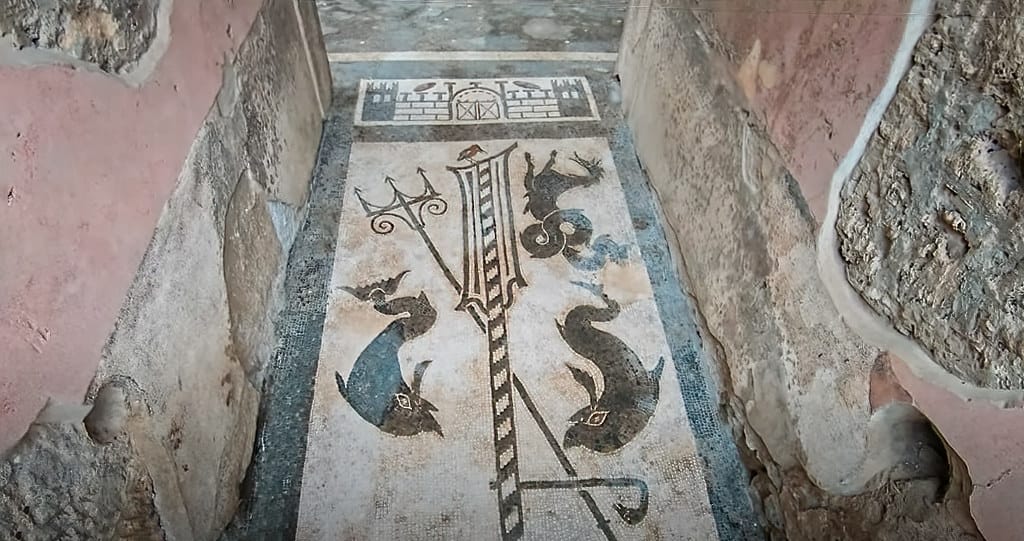AI Archaeologist: Google's Revolutionary Tool Deciphers Ancient Roman Mysteries
In a groundbreaking fusion of cutting-edge technology and classical archaeology, Google has unveiled an artificial intelligence system capable of filling in missing text from damaged Roman inscriptions—potentially unlocking thousands of historical secrets that have remained hidden for centuries.
The AI tool, developed by Google's DeepMind division in collaboration with researchers from Oxford University and Ca' Foscari University of Venice, represents a quantum leap in digital archaeology. Named "Ithaca" after the Greek island central to Homer's Odyssey, this revolutionary system can restore missing words and characters in ancient Greek and Latin inscriptions with remarkable accuracy.
Bridging Millennia with Machine Learning
Ancient inscriptions carved into stone, bronze, and marble have survived for over two millennia, but time has not been kind to these historical treasures. Weather erosion, human damage, and natural disasters have left countless inscriptions incomplete, creating frustrating gaps in our understanding of Roman society, politics, and daily life.
Traditional restoration of these texts has required years of painstaking work by specialized epigraphists—scholars who study ancient inscriptions. Even then, many inscriptions remained partially illegible, their secrets locked away by missing fragments.
Ithaca changes this paradigm entirely. The AI system has been trained on over 78,000 Greek inscriptions and can predict missing text with up to 72% accuracy—a significant improvement over human scholars working alone, who typically achieve around 25% accuracy when restoring heavily damaged texts.
How the Digital Detective Works
The AI operates by analyzing patterns in ancient languages, understanding grammatical structures, and recognizing common phrases and formulations used in different types of inscriptions. When presented with a damaged text, Ithaca considers multiple possibilities for each missing section and ranks them by probability.
What makes this tool particularly sophisticated is its ability to provide not just single predictions, but ranked lists of possible completions. This allows human experts to evaluate multiple options and choose the most historically plausible reconstruction.
The system also demonstrates impressive versatility in dating inscriptions and determining their geographical origins. In tests, Ithaca successfully identified the correct time period for undated inscriptions within 30 years of their actual creation date and pinpointed their origin locations with remarkable precision.
Real-World Archaeological Impact
The practical applications are already proving transformative. Researchers have used Ithaca to decode previously illegible funeral epitaphs, revealing names and relationships that illuminate family structures in ancient Rome. Political inscriptions have yielded new insights into local governance and imperial administration.
One particularly striking example involves a damaged inscription from Ephesus that had puzzled scholars for decades. Ithaca's analysis suggested missing text that completely changed the interpretation of the document, revealing it to be not a standard dedication but a rare example of civic protest against Roman taxation policies.
The tool has also helped resolve long-standing debates about controversial historical interpretations. By providing objective, data-driven suggestions for missing text, Ithaca offers a new layer of evidence that can support or challenge existing scholarly theories.
Collaborative Intelligence, Not Replacement
Importantly, Google's researchers emphasize that Ithaca is designed to augment human expertise, not replace it. The AI provides suggestions and probabilities, but human scholars make the final interpretive decisions based on their deep understanding of historical context, cultural nuances, and linguistic subtleties.
This collaborative approach has already proven its worth. When human experts work alongside Ithaca, their accuracy in text restoration jumps from 25% to an impressive 72%—nearly tripling their success rate.
The Future of Digital Archaeology
Looking ahead, the implications extend far beyond Roman inscriptions. The underlying technology could potentially be adapted for other ancient languages and writing systems, from Egyptian hieroglyphs to Mesopotamian cuneiform. Researchers are already exploring applications for damaged manuscripts, weathered tomb inscriptions, and fragmentary papyri.
The democratization of this technology also promises to accelerate archaeological research globally. Smaller institutions and researchers without access to world-class epigraphists can now analyze their discoveries with unprecedented sophistication.
Unlocking History's Vault
Google's Ithaca represents more than just a technological achievement—it's a new key to humanity's shared past. By helping restore these ancient voices, AI is enabling us to hear stories that have been silent for centuries, enriching our understanding of the civilizations that shaped our world.
As this technology continues to evolve, we stand on the threshold of archaeological discoveries that could reshape our understanding of ancient history, one restored inscription at a time.
